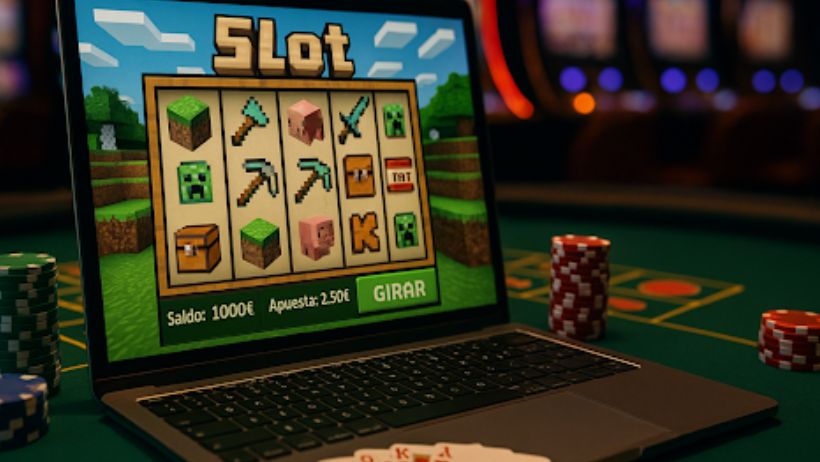When it comes to online gaming, Minecraft servers seem to have scrambled the old playbook. Suddenly, building, competing, and imagining wild contraptions dovetail with, well, slot mechanics and casinos that were once mainly the territory of real-money sites. Now, all sorts of players try to recreate those old-school ideas with just redstone, hoppers, and, honestly, a fair bit of patience. If you look around, what’s happening isn’t just about mimicking. Influence bleeds in from both classic vibes and hits such as rainbow riches.
As custom game systems scatter across servers, it’s kind of hard to ignore a brewing debate over fairness, or maybe it’s more about how much “chance” should matter when all you wanted was a little fun. In a way, what’s really emerging is this curious digital ecosystem, equal parts code and community, where unpredictability and choice are always getting reworked.
Building Slot Machine Gameplay
So, how do folks actually rig up these slot machines in Minecraft? For the tinkering crowd, it’s redstone at the core, pretending to be spinning reels or flashing triple-jackpots. Hoppers shuffle items around, comparators quietly check for matches, and there’s droppers ready to release a reward if things line up. Some of the (possibly a bit too intricate) tutorials from 2023 show it’s possible to throw together six repeaters and, poof, you’ve got your basic cycle. Though, if you’re after a bit of drama or suspense, builders will sometimes go wild, twenty or more repeaters just to slow that spin for a couple of nail-biting seconds.

Matching all those symbols, well, it isn’t exactly luck, it’s a chain of comparators doing their thing, and certain creators really push the details. Outcomes? That’s a numbers game too: a pile of “successful” items mixed in with “blanks” or duds on the reel lets them steer results however they want. Players can activate the mechanism using in-game items, watching how the sequence unfolds. There’s a sense these machines are halfway between actual engineering challenges and pure games of chance.
Online Casino Frameworks And Rainbow Riches
Casino-style environments in Minecraft often borrow from the design logic of popular online slots like rainbow riches. It’s all very calculated, even in block form, with probability tweaks, flashy displays, and layers of reward meant to hold players’ attention. The servers that try to capture this usually adapt the original odds, though the in-game “currencies” are diamonds or rare loot. Sometimes, administrators get creative with prizes: different prize tiers based on chance outcomes. Plug in your valuables, the system takes over, and, if the detectors say so, you leave with a favorable outcome.
The addition of certain redstone blocks, especially since the 1.20 update, seems to have set off a wave of miniature casinos; that’s what the forum chatter points to, anyway. But, and this probably isn’t surprising, not everyone’s thrilled. Some see this as an impressive bit of entertainment and technical wizardry, but others, community members, aren’t quite comfortable with these mechanics edging into such a people-skewed space. Still, it’s pretty common for these setups to become main attractions, just like, well, games such as rainbow riches seem to command the spotlight elsewhere.
User Interaction And Evolving Slot Machine Trends
Things don’t seem to stand still for long in this space. Machine makers in Minecraft keep fussing with new blocks and gadgets, observer blocks in particular, they grab inputs quick, which makes everything just a bit snappier. There’s this trend toward “mini-slots” now: builds that hardly need any materials, so nearly anyone can play. Prizes? Dispensers loaded up with a random mix of rare items make sure a bit of excitement stays in the air, whether it’s a diamond block or some enchanted gear flying out. Developers switch up interactivity often, buttons, blinking lights, even digital scoreboards.
Some servers go further, posting stats of biggest outcomes to encourage friendly interaction or creativity. Something like 30% of larger multiplayer servers are running working casinos or various slot game types. Transparency is getting more focus too. You’ll see the odds posted, or glass windows so anyone can peek at the cycling process, hoping it’s all fair and aboveboard. At this point, customization, not to mention showing your odds, is almost expected, a kind of informal standard for balancing playfulness with… something that at least tries to be responsible.
Scaling Casino Models Across Platforms
Scaling up isn’t just a business thing; in Minecraft, bigger servers need setups that keep everyone engaged without falling apart when a crowd rolls in. Usually, machines get clustered in a dedicated zone, and the busier those spots are, the more often players see varying outcomes depending on design and chance. Limited-time builds or themed challenges encourage player participation. As plugins evolve (anti-fraud tools, basic result tracking), there’s at least a modest effort at fairness.
Some bold server operators mix currencies: you might get virtual coins, maybe some rare material, or both. Behind the scenes, moderators nudge rates up or down to protect in-game economies from collapse. There’s definitely no shortage of blueprint updates showed off on YouTube, so ideas get recycled and reworked constantly. With all these moving parts, Minecraft starts looking less like just a sandbox and more like a sort of living, breathing experiment, though where it all leads isn’t set in stone.
Conclusion On Responsible Gaming
It feels important to point out that, however creative these systems get, player safety ought to stay at the front. Odds should be clear, and, ideally, admins are setting reasonable limits, plus keeping an eye out for players who might take it too far, especially people. If a machine feels rigged or unfair, moderators at least have the option to shut it down.
These mechanics, truthfully, are best when they’re more about creativity and less about piling up losses. Staying transparent seems to help keep things in check, though it’s still kind of a moving target. The hope is simple enough: to make sure Minecraft’s casino-shaped fun doesn’t lose sight of being, first and foremost, enjoyable for everyone who jumps in.


More Stories
Cryptocurrency Casinos: The Digital Revolution
Gambling Partnerships: Boosting Sports Teams
Exploring Classic Slot Machine Allure